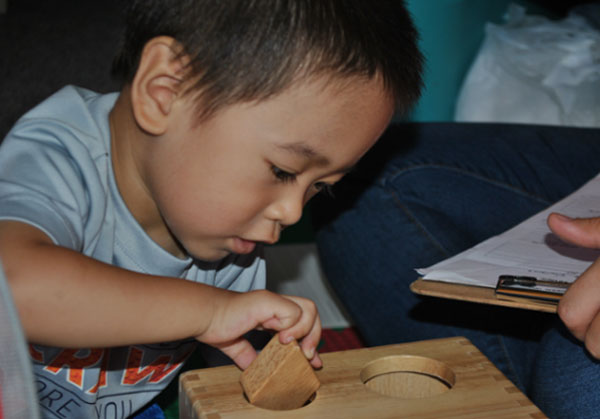 The purpose of screening is to identify children for possible developmental, health, or sensory concerns who should be referred for evaluation. Developmental screening is a brief process using standardized health and developmental screening instruments. Screening is used to make judgments about children in order to determine if a referral for further evaluation is necessary.
The purpose of screening is to identify children for possible developmental, health, or sensory concerns who should be referred for evaluation. Developmental screening is a brief process using standardized health and developmental screening instruments. Screening is used to make judgments about children in order to determine if a referral for further evaluation is necessary.
HSPPS Child screenings and assessments, 45 CFR §1302.33, requires:
- Screenings occur with the consent and collaboration of the parents
- Programs complete or obtain (from a local Individuals with Disabilities Education Act (IDEA) agency, for example) a current developmental screening to identify concerns regarding a child's developmental, behavioral, motor, language, social, cognitive, and emotional skills within 45 calendar days of when the child first attends the program or, for the home-based program option, receives a home visit
- A program that operates for 90 days or less must complete or obtain a current developmental screening within 30 calendar days of when the child first attends the program
- A program must use one or more research-based developmental standardized screening tools to complete the screening
- As part of the screening, a program must use additional information from family members, teachers, and relevant staff familiar with the child's typical behavior
- If warranted through screening and additional relevant information, and with direct guidance from a mental health or child development professional, a program must, with the parent's consent, promptly and appropriately address any needs identified via referral to the local agency responsible for implementing IDEA for a formal evaluation to assess the child's eligibility for services under IDEA as soon as possible, and not to exceed timelines required under IDEA
- Partnership with the child's parents and the relevant local agency to support families through the formal evaluation process
How To
You must complete the required developmental screening within 45 days of a child's enrollment by:
- Involving parents from the very first meeting as you talk about their child's development
- Going slowly, as most developmental screenings take less than 20 minutes to do and you have six weeks in which to complete a screen for each newly enrolled child
- Use it as a way of building your relationship through your mutual interest in the child
- Use it as a way of describing what the child is doing now and how that contributes to building the foundation of learning and development
- Using a tool that is standardized and, preferably, requires parent input; parent reporting is an important source of information about a child
- Explaining to parents the purpose of screening is to get a snapshot of where a child is developmentally at a point in time
- Their child may be ahead of or behind any particular assessment item without it necessarily meaning that the child is advanced or developmentally delayed
- Using hearing and vision screening as well as the developmental screening tools
- Describing to parents how development in each domain and the development of the senses create the foundation for school readiness
Learn More
Developmental Screening, Assessments, and Evaluations for Infants and Toddlers
This webinar discusses how to integrate data from assessments into daily experiences. Early Head Start staff also learn how to identify behavioral and developmental concerns observed while working with infants and toddlers.
Developmental Screening and Assessment Instruments with an Emphasis on Social and Emotional Development for Young Children Ages Birth Through Five
This list of developmental screening and assessment instruments was gathered through a review of infant mental health literature. Disability coordinators may use this information to address multiple developmental and social and emotional domains. The list includes a description for each tool, the age range for which an instrument was validated, and its scoring procedure.
Read more:
Resource Type: Article
National Centers: Early Childhood Development, Teaching and Learning
Last Updated: March 18, 2022
